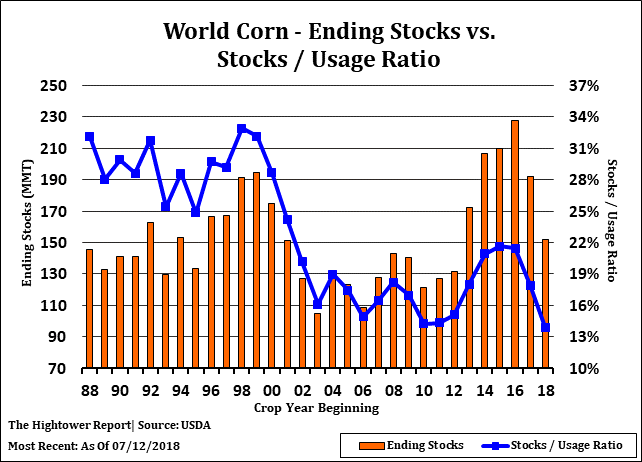
Maize, popularly known as corn, previously used as feed for the poultry has suddenly come across as a source of doubling the farmers income as per the Governments mission. The government has been directing the farmers to plant maize to increase the income from unconventional crops.
National Rainfed Area Authority (NRAA) CEO Ashok Dalwai said farmers' income can be increased with more cultivation of maize, which is used as food, feed and fuel.
By 2022, India has to increase maize production in the country by 75 percent to 45 million tonnes (mt) to meet the increasing domestic requirement. According to a report by FICCI and Pricewaterhouse Coopers. By 2022, India would need 30 mt of maize as feed and another 15 mt for food.
Thanjavur District Collector A. Annadurai inspected maize cultivation in Thiruvonam block. The 60-day crop is a profitable one with farmers hoping to make ten tonnes per hectare. "Maize is being sold at Rs. 13 to 15 per kilo now. Maize cultivation is fast catching up in Thanjavur district as farmers are in search of paddy alternative. In Thiruvonam block alone, farmers have raised maize on 250 hectares. The agriculture Department expect maize to come up on 1,000 hectares in the district this year.

Maize is the second most important cereal crop in the world in terms of acreage and is called the ‘Queen of Cereals’. Maize accounts for the major share of the coarse grain production; showing a steady upward trend over the last decade on growing demand (poultry feed and industrial use) and increasing productivity (better hybrid seeds). Increasing adoption of improved hybrids, particularly single cross hybrids, has encouraged farmers to bring more area under Maize cultivation. Consequently, area under Maize has gone up with 3 percent CAGR from 6.6 million hectares in FY 2000 - 01 to a record 10.2 million hectares in FY 2016 - 17. In addition to acreage expansion, Supply - Demand pattern and overall value chain in Maize sector has also evolved over last few years.
Country's maize yield needs to be doubled from the current 2.7 tonne per hectare in order to boost farmers' income and increase production to 45 million tonne by 2022. While there are constrains of land resources, the only option left with farmers is to increase the maize yield, which can be done by adopting advanced hybrids and best agronomic practices.

The government targets to increase maize production to 45 million tonne by 2022 from the current 27 million tonne in 2017-18 crop year.
National Rainfed Area Authority (NRAA) CEO Ashok Dalwai said farmers' income can be increased with more cultivation of maize, which is used as food, feed and fuel.
Maize consumption has increased by 2 percent during the 2016-17 over previous year to 24 Mn MT. It includes 13.5 Mn MT for poultry feed, 1.8 Mn MT for starch, 1.2 Mn MT for ethanol, and balance for food, seed and other uses. Maize value chain spans through an inter-dependent input companies, farmers, traders, processors and retailers, all of whom must ultimately satisfy the varying demands of the consumer in a sustainable manner. A closer look at the maize value chain, reveals that both backward and forward linkages have evolved over last few years and the value chain has witnessed technological interventions in multiple facets. The backward linkages comprise of seed, farm machineries, crop care chemicals and other farm inputs, whereas front end encompasses storage and post-harvest management (PHM), procurement, storage, processing and marketing activities.















